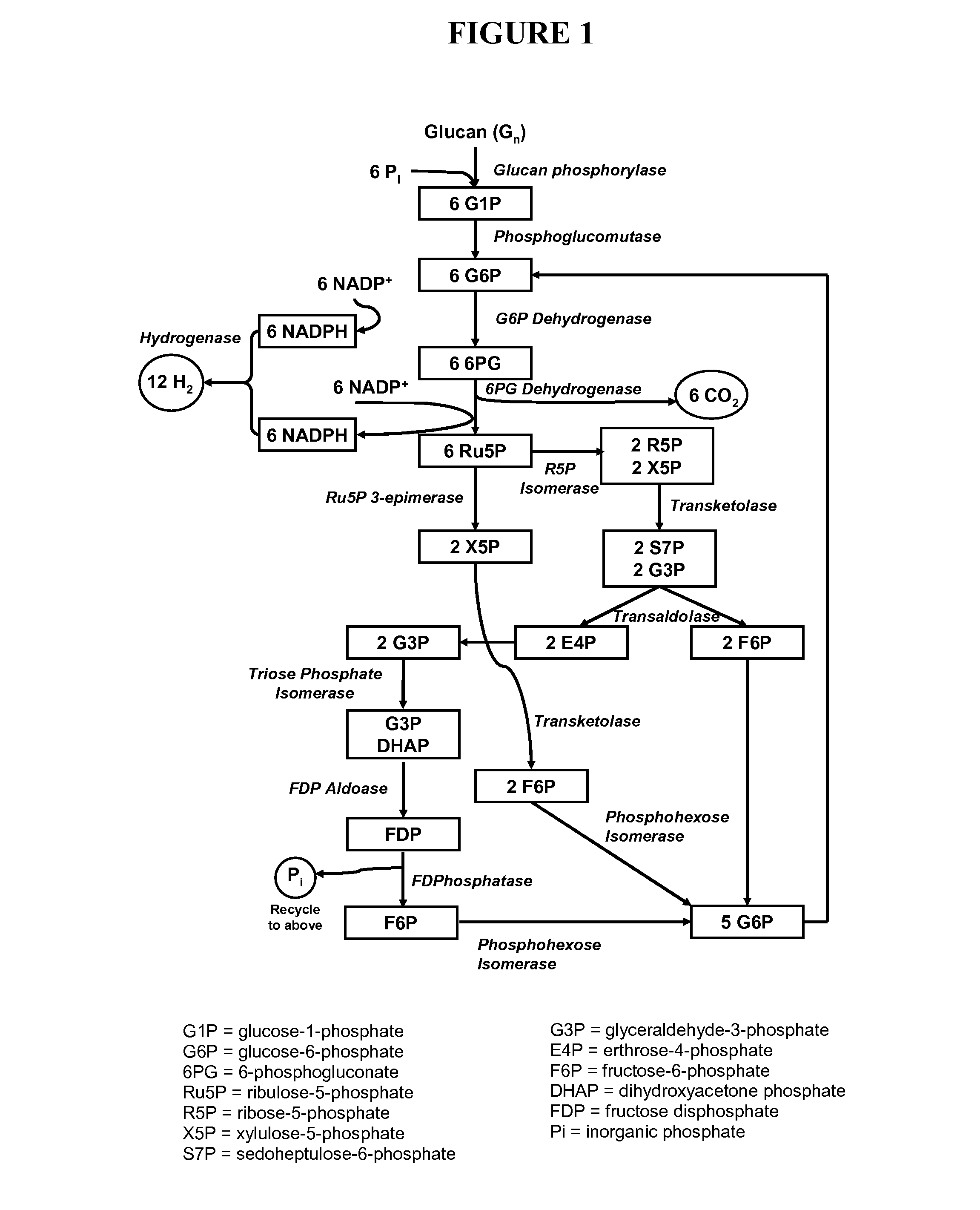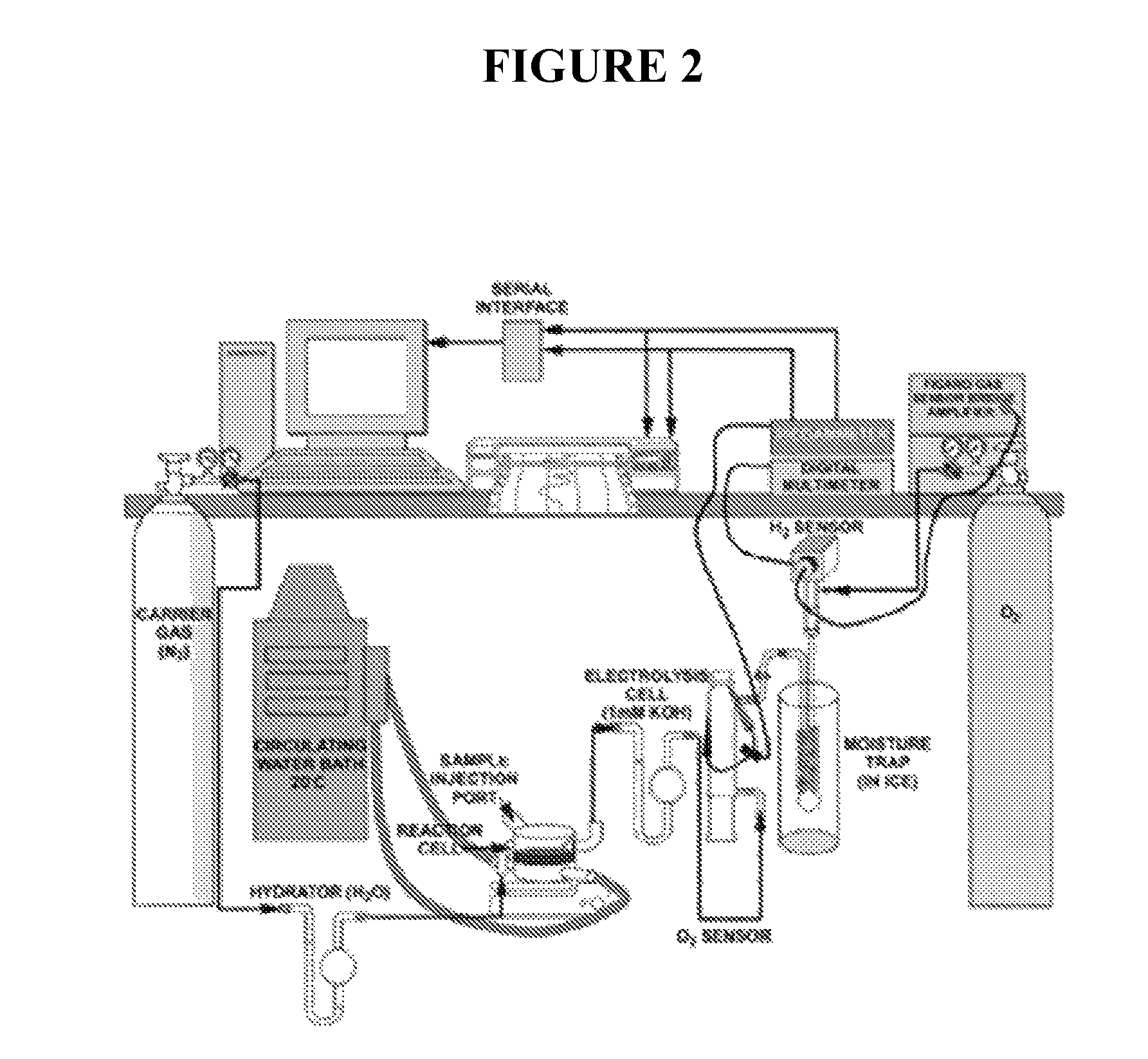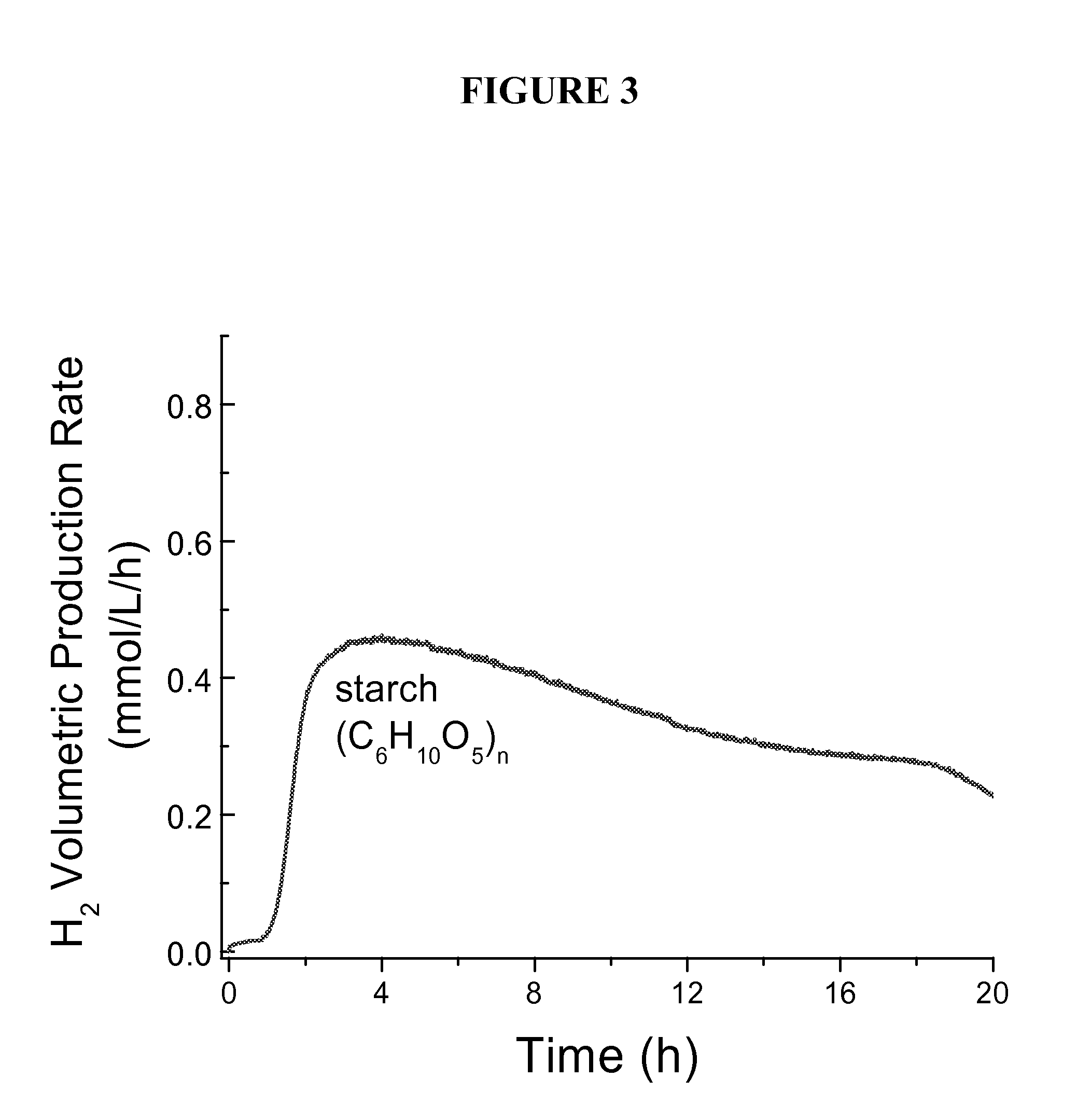Biohydrogen production by an artificial enzymatic pathway
a biohydrogen and artificial enzymatic technology, applied in the field of biotechnology, can solve the problems of preventing widespread commercialization of such devices, threatening sustainable development, and evoking the depletion of fossil fuel reserves in the world's eventual period of tim
- Summary
- Abstract
- Description
- Claims
- Application Information
AI Technical Summary
Benefits of technology
Problems solved by technology
Method used
Image
Examples
example 1
[0077]Enzymatic Production of H2 and CO2 from Starch and Water
[0078]To exemplify the practical nature of the present methods, systems, and compositions, starch was converted to hydrogen and carbon dioxide in a process according to the present invention. Experiments were carried out in a continuous flow system with the moisture traps cooled with ice. All chemicals and enzymes were purchased from Sigma-Aldrich Co. (U.S.A.), unless otherwise noted. All enzymes and their catalysis reactions are listed in Table 1. The working volume of the custom reactor was 2 mL. The system was continuously purged with helium at a flow rate of 50 mL / min. The temperature of the jacketed reaction vessel was maintained at 30° C. with a Polyscience (Niles, Ill.) circulating water bath.
[0079]
TABLE 1Enzymes and Catalysis ReactionsECEnzyme NameReactionOriginUnits2.4.1.1glycogen(C6H10O5)n + Pi + H2O → (C6H10O5)n−1 + glucose-rabbit muscle10phosphorylase1-P5.4.2.2phosphoglucomutaseG-1-P → G-6-Prabbit muscle101.1....
PUM
| Property | Measurement | Unit |
|---|---|---|
| temperatures | aaaaa | aaaaa |
| temperatures | aaaaa | aaaaa |
| temperatures | aaaaa | aaaaa |
Abstract
Description
Claims
Application Information
 Login to View More
Login to View More - R&D
- Intellectual Property
- Life Sciences
- Materials
- Tech Scout
- Unparalleled Data Quality
- Higher Quality Content
- 60% Fewer Hallucinations
Browse by: Latest US Patents, China's latest patents, Technical Efficacy Thesaurus, Application Domain, Technology Topic, Popular Technical Reports.
© 2025 PatSnap. All rights reserved.Legal|Privacy policy|Modern Slavery Act Transparency Statement|Sitemap|About US| Contact US: help@patsnap.com



